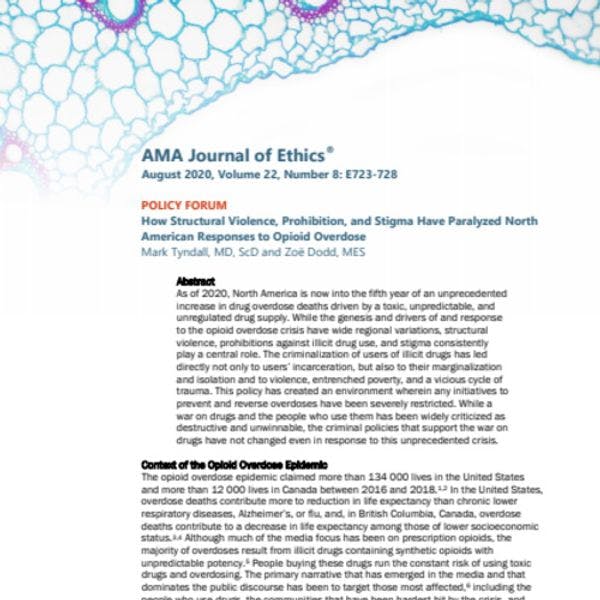Cómo la Violencia Estructural, la Prohibición y el Estigma Han Paralizado las Respuestas a las Sobredosis de Opiáceos en Norteamérica
Tyndall y Dodd discuten las raíces de la inacción de gestores de políticas para acabar con la prohibición y, a la vez, con la crisis de las sobredosis. Más información, en inglés, está disponible abajo.
By Mark Tyndall, and Zoë Dodd
As of 2020, North America is now into the fifth year of an unprecedented increase in drug overdose deaths driven by a toxic, unpredictable, and unregulated drug supply. While the genesis and drivers of and response to the opioid overdose crisis have wide regional variations, structural violence, prohibitions against illicit drug use, and stigma consistently play a central role. The criminalization of users of illicit drugs has led directly not only to users’ incarceration, but also to their marginalization and isolation and to violence, entrenched poverty, and a vicious cycle of trauma. This policy has created an environment wherein any initiatives to prevent and reverse overdoses have been severely restricted. While a war on drugs and the people who use them has been widely criticized as destructive and unwinnable, the criminal policies that support the war on drugs have not changed even in response to this unprecedented crisis.
